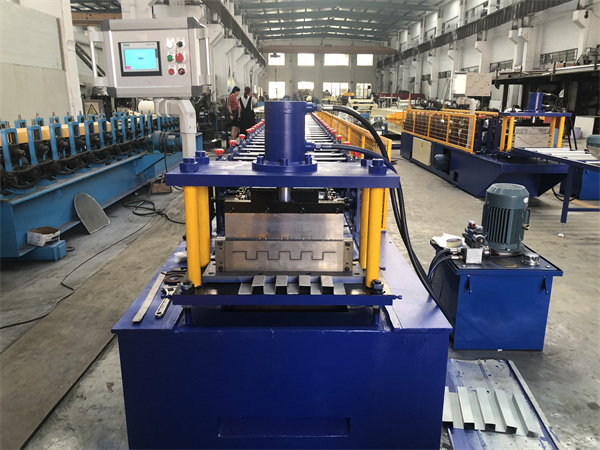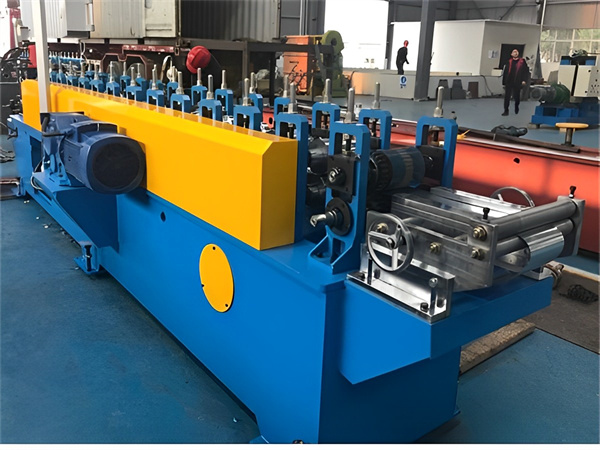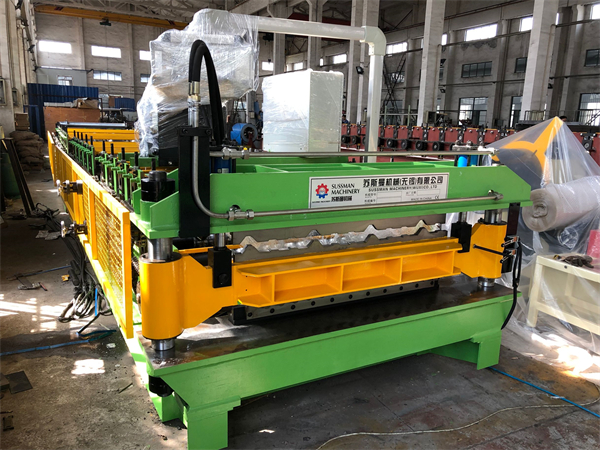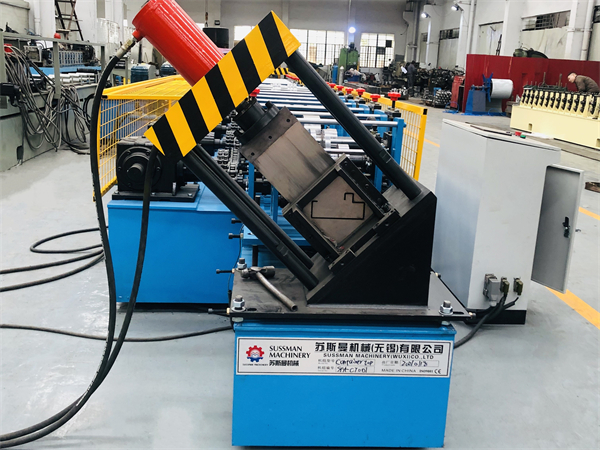In today’s fast-paced manufacturing industry, efficiency, precision, and cost-effectiveness are paramount. One technology that has been instrumental in meeting these demands is the metal roll forming machine. Metal roll forming machines have significantly transformed the way metal components are produced, shaping everything from architectural elements to automotive parts with remarkable accuracy and speed.
1. How Metal Roll Forming Machines Work
At its core, a metal roll forming machine is designed to shape metal sheets or coils into predetermined profiles. The process involves guiding a strip of metal through a series of rollers and dies, gradually forming it into the desired shape. This continuous process allows for the creation of complex and consistent profiles that would be difficult to achieve using other methods. The rollers and dies work in tandem to bend, curve, and shape the metal, while the material feed ensures a steady progression through the machine.

2. Benefits of Metal Roll Forming Machines
Metal roll forming machines offer a multitude of benefits that have solidified their role in modern manufacturing. One of the most notable advantages is their high efficiency. The continuous nature of the process, coupled with automated material feeding, leads to rapid production rates. Additionally, the accuracy achieved by roll forming machines is unmatched, ensuring uniformity across the produced components.
In terms of cost-effectiveness, metal roll forming shines, especially in large-scale production. The reduction of material waste, coupled with minimal need for secondary operations, significantly lowers overall costs. This is particularly advantageous in industries where consistency and speed are paramount.
3. Applications of Metal Roll Forming
The applications of metal roll forming are diverse and span various industries. In the construction sector, these machines are used to create structural components like roof panels, wall studs, and framing elements. The automotive industry relies on roll forming to manufacture parts such as chassis components, window channels, and seat tracks. The versatility of roll forming machines allows them to adapt to different materials, making them indispensable across different sectors.
4. Choosing the Right Metal Roll Forming Machine
Selecting the appropriate roll forming machine involves considering factors such as the type of material to be used, the complexity of the profile, and the desired output volume. Different materials, such as steel, aluminum, and copper, require specific machine configurations to achieve optimal results. Modern roll forming machines often come with customization options, allowing manufacturers to adapt the machine to their specific needs. This versatility ensures that a single machine can produce a range of profiles, reducing the need for multiple equipment setups.
5. Maintenance and Upkeep
To ensure consistent performance and prolong the lifespan of a metal roll forming machine, regular maintenance is crucial. Cleaning, lubrication, and inspection of rollers, dies, and other components are essential to prevent wear and tear. By following a routine maintenance schedule, manufacturers can avoid unexpected downtime and maintain the quality of their products.
6. Technological Advancements in Roll Forming
The integration of technology has propelled metal roll forming into a new era. Computer-aided design (CAD) software allows manufacturers to create intricate profiles with precision. Automation and robotics have further streamlined the process, reducing the need for manual intervention and minimizing the risk of errors. These advancements not only improve efficiency but also enhance the overall quality of the final product.

7. Challenges in Metal Roll Forming
Despite its numerous benefits, metal roll forming is not without its challenges. Creating complex profiles can be intricate and time-consuming, requiring careful calibration of rollers and dies. Material deformation is also a concern, particularly when working with brittle or thin materials. Manufacturers must address these challenges through meticulous planning and engineering.
8. Future Trends in Metal Roll Forming
Looking ahead, the future of metal roll forming is marked by sustainability and innovation. As industries emphasize eco-friendly practices, roll forming is expected to align with these goals by using recycled materials and optimizing energy usage. Additionally, the integration of artificial intelligence and machine learning will further enhance process control and product quality.
9. Comparing Metal Roll Forming with Other Methods
When compared to traditional metal fabrication methods such as bending and stamping, roll forming offers distinct advantages. The precision achieved by roll forming is unparalleled, ensuring tight tolerances and consistent profiles. Furthermore, in contrast to 3D printing, which is better suited for smaller-scale production, roll forming excels in high-volume manufacturing due to its continuous and rapid nature.
10. Real-world Case Studies
The success stories of industries adopting metal roll forming machines highlight the technology’s transformative impact. Companies have achieved remarkable results by leveraging the efficiency and precision of roll forming. Intricate shapes and designs that were once considered challenging to produce can now be realized with relative ease, opening up new possibilities for product innovation.

11. Safety Measures and Regulations
As with any machinery, safety is paramount when operating metal roll forming machines. Manufacturers must adhere to industry standards and regulations to ensure the well-being of machine operators. Implementing safety features, providing proper training, and maintaining clear operational guidelines are essential steps in creating a safe working environment.
12. The Role of Skill and Expertise
While automation has streamlined many aspects of metal roll forming, human skill and expertise remain crucial. Machine operators are responsible for machine setup, quality control, and troubleshooting. Striking the right balance between automation and human involvement ensures the best possible results while also fostering a culture of continuous improvement.
13. Cost Analysis and Return on Investment
The decision to invest in a metal roll forming machine requires a comprehensive cost analysis. While the initial investment may seem substantial, the long-term benefits, including reduced material waste, increased production efficiency, and consistent product quality, contribute to a favorable return on investment. Manufacturers should assess various scenarios to understand how roll forming can optimize their operations.

14. Conclusion
In the dynamic landscape of modern manufacturing, the metal roll forming machine stands as a symbol of efficiency, precision, and innovation. Its ability to shape metal into intricate profiles with speed and accuracy has transformed industries, from construction to automotive. As the technology continues to evolve and adapt to changing demands, the role of metal roll forming machines is poised to expand even further, solidifying their position as a cornerstone of metal fabrication.
15. FAQs
- What materials can be used with metal roll forming machines? Roll forming machines can work with various materials, including steel, aluminum, copper, and more.
- Are roll forming machines suitable for small-scale production? While roll forming excels in high-volume manufacturing, they can be adapted for smaller-scale production based on the design complexity.
- What advantages does CAD integration offer in roll forming? CAD integration enables precise design and customization, leading to intricate profiles and reduced development time.
- How does roll forming compare to traditional bending methods? Roll forming offers higher precision, consistent profiles, and efficiency, making it preferable for many applications.
- What’s the impact of automation on roll forming efficiency? Automation enhances speed, reduces manual errors, and improves overall production efficiency in roll forming processes.
